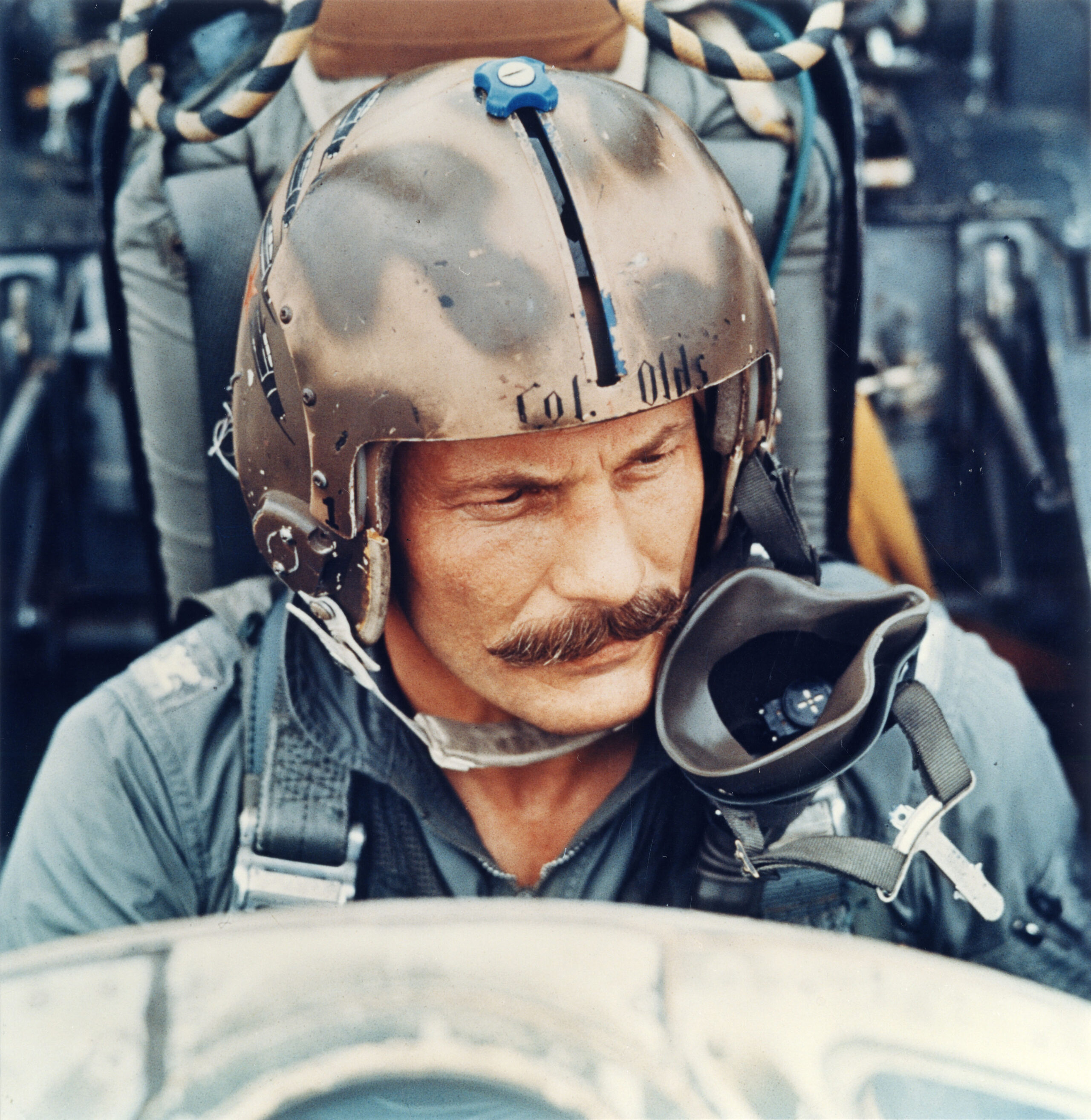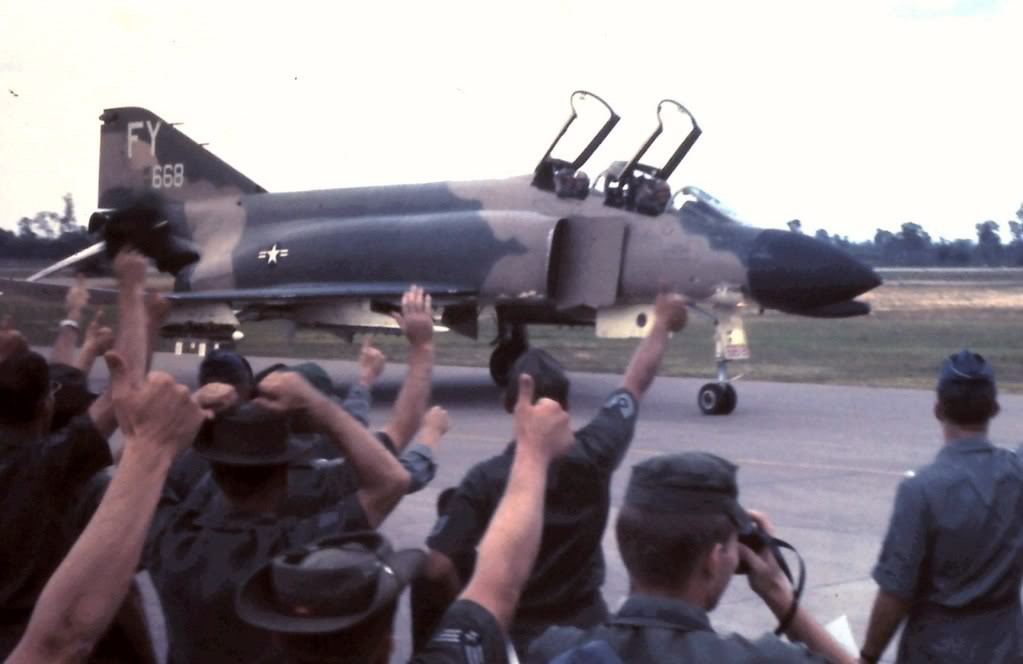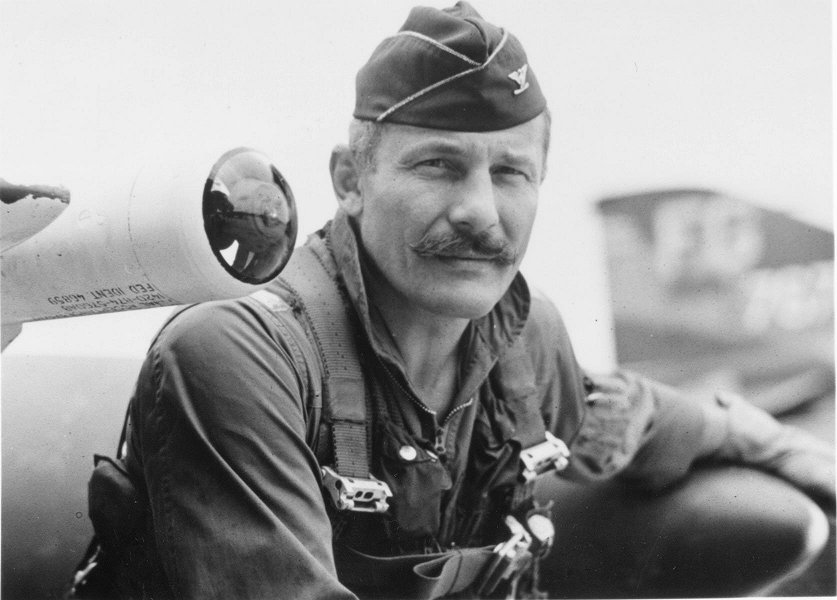
4 May 1967: Colonel Robin Olds, United States Air Force, commanding the 8th Tactical Fighter Wing based at Ubon RTAFB, shot down his second enemy airplane during the Vietnam War.
Colonel Olds had flown Lockheed P-38 Lightning and North American P-51 Mustang fighters during World War II. He is officially credited with shooting down 12 enemy airplanes over Europe and destroying 11.5 on the ground. On 2 January 1967, he had destroyed a MiG-21 near Hanoi, North Vietnam, while flying a McDonnell F-4C Phantom II. He was the first U.S. Air Force fighter ace to shoot down enemy aircraft during both World War II and the Vietnam War.
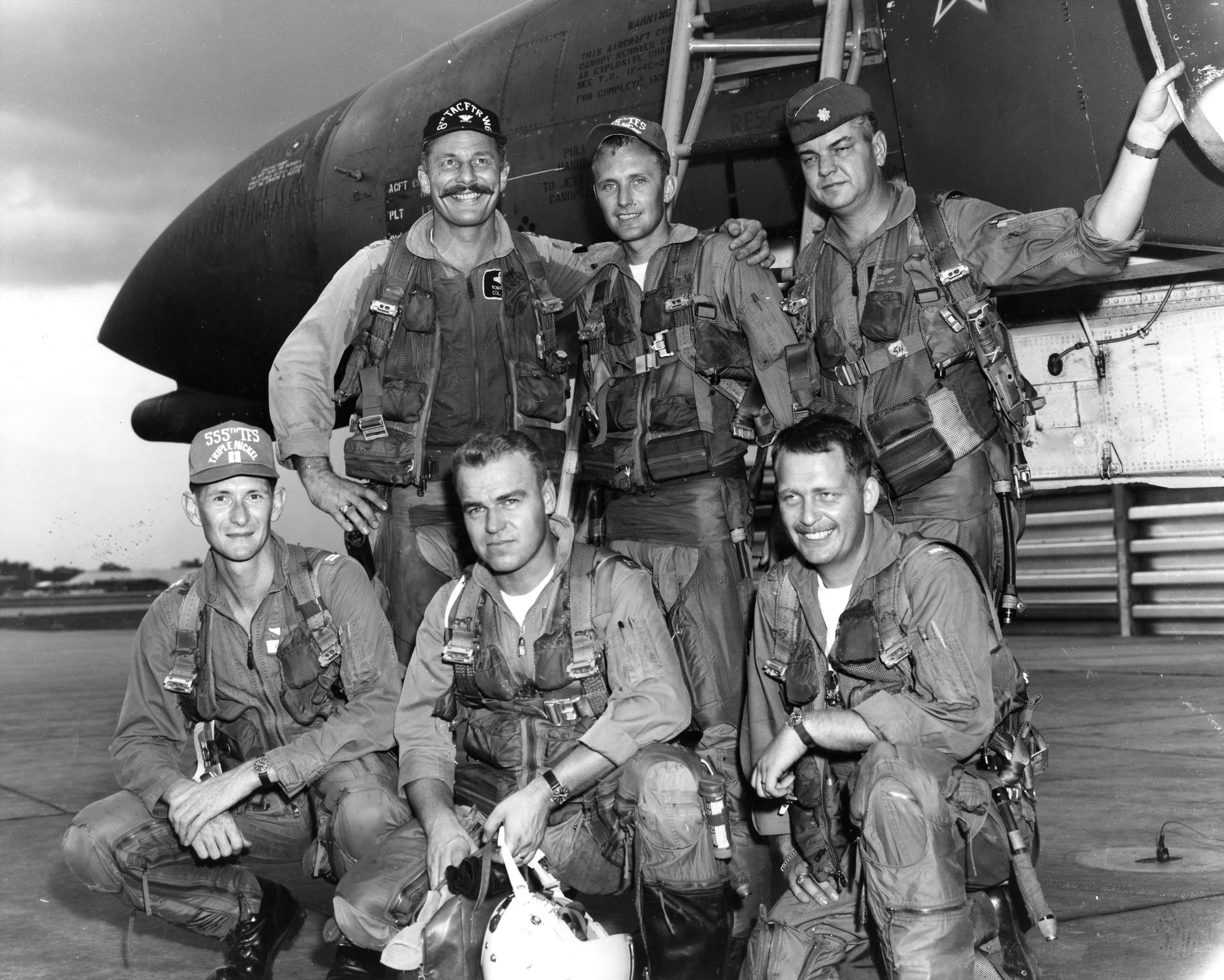
A description of the air battle follows:
On 4 May, the 8th TFW provided two flights of Phantoms for MiGCAP for five F-105 flights of the 355th TFW which were on a strike mission. Col. Olds, 8th Wing commander, led the rear flight, flying with 1st Lt. William D. Lafever. The other F-4 flight was sandwiched midway in the strike force. MiG warnings crackled on Olds’ radio just before his wingman sighted two MiG-21s at 11 o’clock, attacking the last of the Thunderchief flights. Colonel Olds’ account picks up the encounter at this point:
“The MiGs were at my 10 o’clock position and closing on Drill [the F-105 flight] from their 7:30 position. I broke the rear flight into the MiGs, called the F-105s to break, and maneuvered to obtain a missile firing position on one of the MiG-21s. I obtained a boresight lock-on, interlocks in, went full system, kept the pipper on the MiG, and fired two AIM-7s in a ripple. One AIM-7 went ballistic. The other guided but passed behind the MiG and did not detonate. Knowing I was too close for further AIM-7 firing, I maneuvered to obtain AIM-9 firing parameters. The MiG-21 was maneuvering violently and firing position was difficult to achieve. I snapped two AIM-9s at the MiG and did not observe either missile. The MiG then reversed and presented the best parameter yet. I achieved a loud growl, tracked, and fired one AIM-9. From the moment of launch it was obvious that the missile was locked on. It guided straight for the MiG and exploded about 5–10 feet beneath his tailpipe.
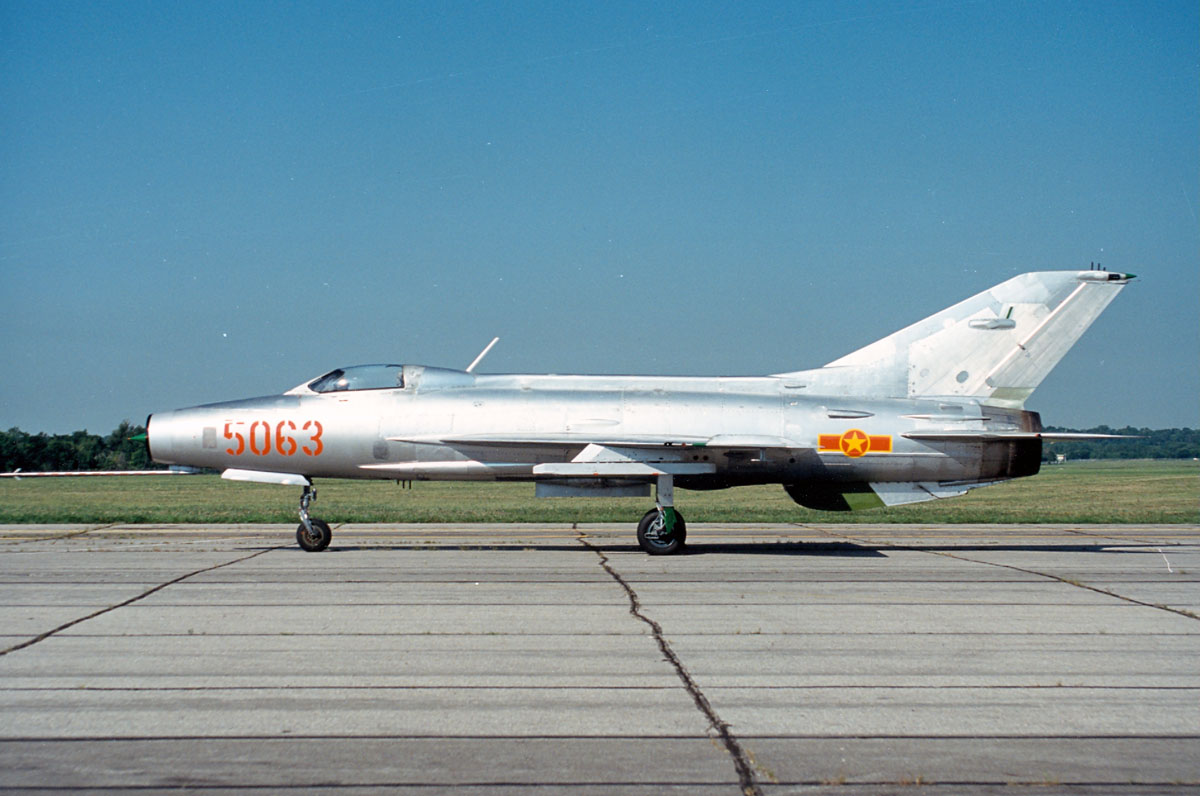
“The MiG then went into a series of frantic turns, some of them so violent that the aircraft snap-rolled in the opposite direction. Fire was coming from the tailpipe, but I was not sure whether it was normal afterburner or damage-induced. I fired the remaining AIM-9 at one point, but the shot was down toward the ground and did not discriminate. I followed the MiG as he turned southeast and headed for Phuc Yen. The aircraft ceased maneuvering and went in a straight slant for the airfield. I stayed 2,500 feet behind him and observed brilliant white fire streaming from the left side of his fuselage. It looked like magnesium burning with particles flaking off. I had to break off to the right as I neared Phuc Yen runway at about 2,000 feet, due to heavy, accurate, 85-mm barrage. I lost sight of the MiG at that point. Our number 3 saw the MiG continue in a straight gentle dive and impact approximately 100 yards south of the runway.”
Colonel Olds then took his flight to the target area and covered the last of the 355th TFW strike aircraft as they came off the target. Leading his flight to Hoa Lac airfield and dodging two SAMs on the way, he found five MiG-17s over that airfield.
“We went around with them at altitudes ranging from 1,500 to 6,000 feet, right over the aerodrome,” Olds reported. The F-4s ran low on fuel before any real engagements occurred, however, and were forced to break off the encounter.
— Aces and Aerial Victories: The United States Air Force in Southeast Asia 1965–1973, by R. Frank Futrell, William H. Greenhalgh, Carl Grubb, Gerard E. Hasselwander, Robert F. Jakob and Charles A. Ravenstein, Office of Air Force History, Headquarters USAF, 1976, Chapter II at Pages 51–53.
During this mission, Colonel Olds and Lieutenant Lefever flew McDonnell F-4C-21-MC Phantom II serial number 63-7668.
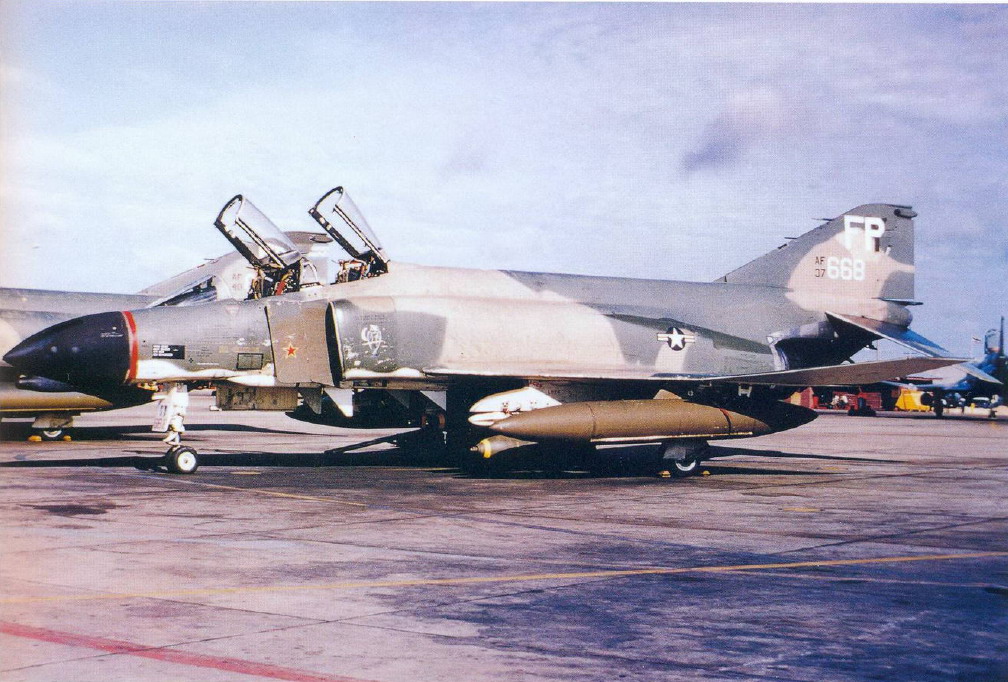
© 2016, Bryan R. Swopes
